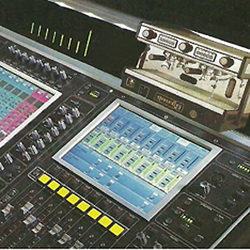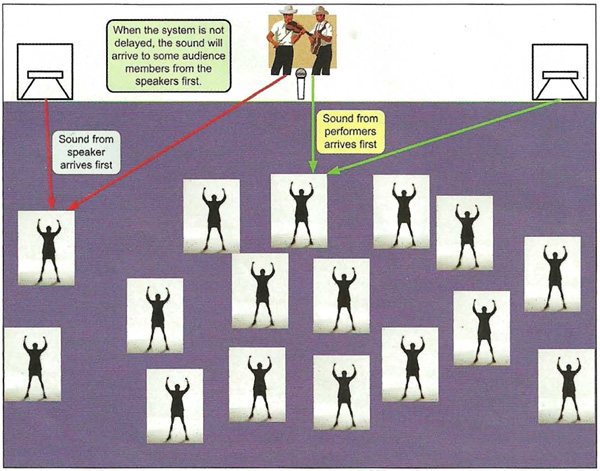
Think about an acoustic jazz band on a theater stage.
Without reinforcement, the majority of the audience is probably hearing a dull, “mid-rangey” ambient sound, mostly devoid of bass and highs.
Reflections are probably more prominent than the direct signal. In other words, mostly crappy sound.
Let’s introduce a PA to bring the listeners closer to the band, or perhaps bring the band closer to the listeners. We can carefully add bass to selected instruments (such as, well, bass) and we can add highs to things like cymbals and piano.
By simply doing this, and leaving everything else alone (i.e. not boosting the mids to the same degree), we might already be well on our way to improving things for the listener.
The next step might be to subtly boost those instruments that can’t compete, say, upright bass (again), piano, and jazz guitar (if un-amplified). Now, we have a balanced sound between instruments in the group, with only those frequencies missing being boosted in the PA.
And by having the loudspeakers carefully pointed at the audience and away from the walls, we have introduced more direct sound to the audience to overcome the natural ambience. So far, so good.
SOUND TRAVELS AT THE SPEED OF, WELL, SOUND
Another problem is that now the sound will appear to be coming from the loudspeakers, with the illusion of “no PA” destroyed. The reason for this is simple: the loudspeakers are closer to the audience than the actual instruments. Because sound travels at a relatively slow 1,130 feet per second at room temperature at sea level, even fairly small differences in distance (say, 10 feet or greater) can be noticeable.
When sound from one source arrives before an exact copy of that sound from another source, the ear senses the direction of the sound as coming from the one that arrives first. This is known as the precedence or Hass effect. (See Figure 1.)

Now take this a step further. Imagine a person giving a speech at a podium at the center of a stage, but the PA loudspeakers are to the right and left of the stage. Audience members exactly in the center of the venue may have the illusion that the sound is coming from the speaking person, because sound from both loudspeakers will be arriving at the same time as the voice, to those listeners.
But to the left or right in the audience, the shift is dramatic, where it’s obvious that the person’s voice is coming from the loudspeaker on that respective side of the stage.
